Cebu Province Travel Guide
- KGM Resorts
- Aug 5
- 13 min read
Islands, Heritage, and Hidden Wonders
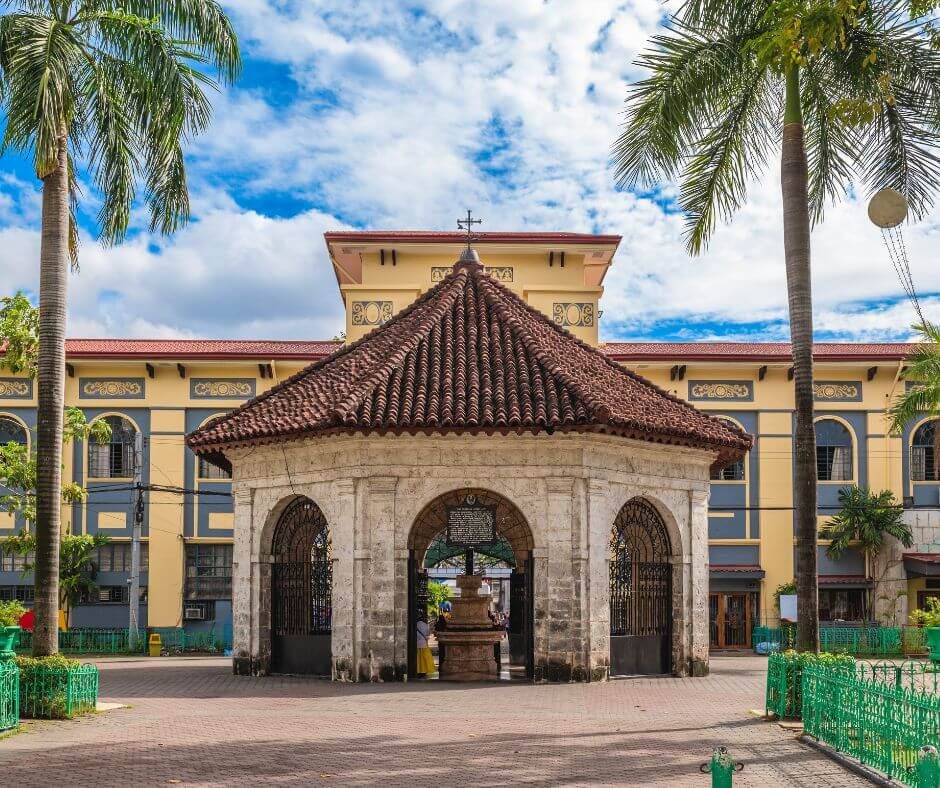
Known as the Queen City of the South, Cebu is a vibrant fusion of the old and new—where centuries-old churches and historic landmarks stand just a short drive from dazzling beach resorts and dive havens. As the oldest city in the Philippines and once the cradle of Christianity in Asia, Cebu’s legacy stretches from pre-colonial trade to Spanish colonization, all the way to its present-day role as a central hub for tourism, commerce, and culture in the Visayas.
Cebu Province is more than just Cebu City. Beyond the bustling capital lies a string of idyllic island towns, pristine white-sand beaches, turquoise waterfalls, and rugged mountain escapes. Whether you're diving with thresher sharks in Malapascua, island-hopping through Bantayan and Camotes, or savoring world-famous Lechon in Carcar, Cebu offers a travel experience that’s as diverse as it is unforgettable.
In this guide, we’ll take you through Cebu’s rich history, top attractions, hidden gems, food and festivals, accommodation options, and essential travel tips—so you can explore the many faces of this dynamic island province and uncover why Cebu continues to capture the hearts of travelers from around the world.
Location and Geography
Cebu Province is a geographic and cultural anchor in the heart of the Philippines. Part of Central Visayas (Region VII), it includes the main island of Cebu and over 150 satellite islets. Its central position and excellent connectivity make it a prime gateway to the Visayas and beyond.
Cebu Island – A narrow, elongated landmass stretching north to south, home to urban centers, mountain towns, and coastal municipalities. Cebu City, the vibrant capital, sits near its center and serves as the province’s economic and historical core.
Surrunding Islands – Off Cebu’s coast lie island gems:
Bantayan (northwest) – famous for white-sand beaches and Holy Week traditions
Malapascua (north) – world-renowned for thresher shark diving
Camotes Islands (east) – ideal for cave exploration and slow island life
Sumilon Island (south) – a marine sanctuary and exclusive resort hideaway
Geographic Zones:
East Coast – Urban sprawl and economic activity thrive here, including Lapu-Lapu City and Mandaue
West and Central Highlands – Cooler elevations, agricultural towns like Balamban and scenic mountain roads
Southern Corridor – A haven for divers and marine adventurers, with Moalboal, Oslob, and Badian
Neighboring Provinces – Cebu is bordered by Bohol, Leyte, and Negros Oriental, making it a key inter-island travel hub in the Visayas.
Cebu’s geography blends cosmopolitan life with island serenity, offering something for every kind of traveler.
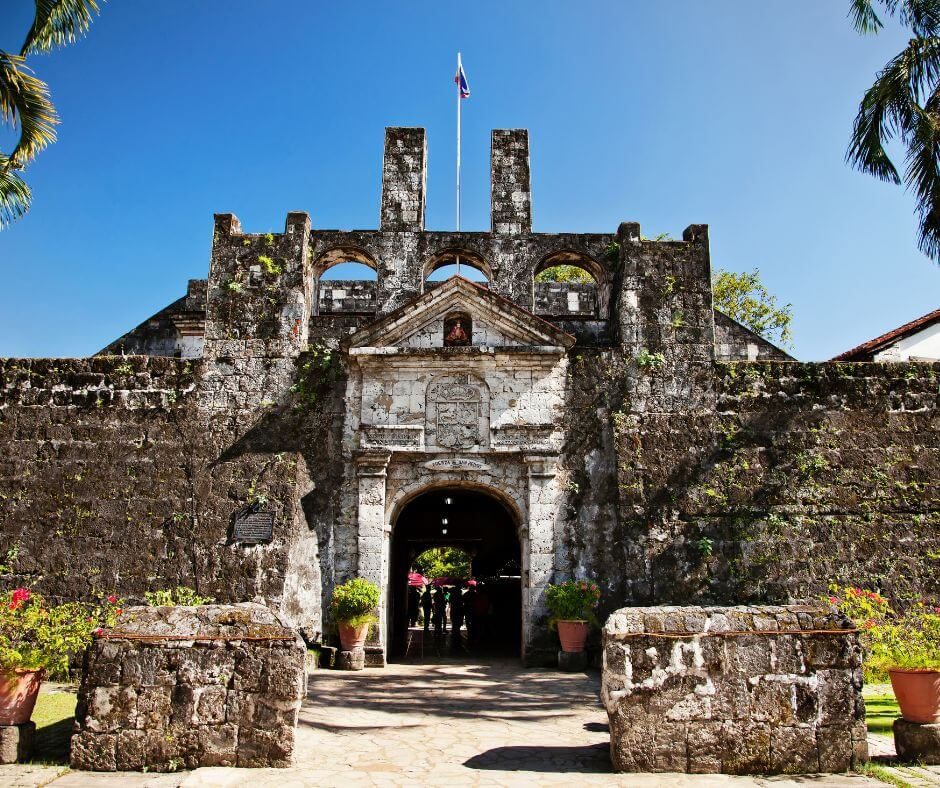
A Brief History of Cebu
Cebu’s history is as vibrant as its shores—deeply rooted in pre-colonial trade and shaped by pivotal moments that defined the Philippine nation. Known as the “Cradle of Christianity in the Philippines,” Cebu has played a central role in shaping the country’s cultural and spiritual identity.
Pre-Colonial Cebu – Long before the Spanish arrived, Cebu was a flourishing port city known as Sugbo, ruled by Rajah Humabon. It was a center of trade and diplomacy, welcoming merchants from China, India, Arabia, and the Malay Archipelago.
1521: Magellan’s Arrival – Portuguese explorer Ferdinand Magellan landed on Cebu's shores under the Spanish flag, forging an alliance with Rajah Humabon and baptizing hundreds into Christianity. This marked the beginning of Catholicism in the Philippines. However, Magellan met his end shortly after in the nearby Battle of Mactan.
Birthplace of Spanish Colonization – In 1565, Miguel López de Legazpi returned and established the first permanent Spanish settlement. From here, Spanish rule expanded across the islands, making Cebu the birthplace of Spanish colonization in the Philippines.
Enduring Landmarks – Cebu’s heritage remains alive in iconic sites like:
Magellan’s Cross – Symbolizing the start of Christianization
Basilica Minore del Santo Niño – Home to the country’s oldest Christian relic
Fort San Pedro – The oldest triangular bastion fort in the country
Modern Era – From Spanish galleons to post-war reconstruction, Cebu evolved into a major economic hub, home to a bustling seaport, expanding tech parks, and a vibrant cultural scene.
Cebu’s layered history is a journey through time—where ancient rituals, colonial legacies, and modern progress coexist.
Flora and Fauna of Cebu
Cebu may be one of the Philippines’ most developed provinces, but it still shelters rich pockets of biodiversity on land and under the sea.
Native Flora
Cebu’s lowland and upland areas are home to coconut palms, bamboo groves, and mangrove forests, especially in coastal areas. In the upland zones like Nug-as Forest in Alcoy, you’ll find endemic species such as Cebu cinnamon and rare orchids thriving in limestone-rich soil and cooler microclimates.
Unique Fauna
Cebu is the last known habitat of the Cebu flowerpecker (Dicaeum quadricolor), a critically endangered bird once thought extinct until its rediscovery in the 1990s. Other forest dwellers include civet cats, Philippine flying lemurs (colugo), and several species of fruit bats and forest birds that rely on remaining forest patches.
Marine Biodiversity
Cebu’s surrounding waters are part of the Coral Triangle and teem with life. Sea turtles, parrotfish, lionfish, and nudibranchs thrive in coral reefs around Moalboal, Malapascua, and Camotes. Notably, Malapascua Island is one of the only places in the world where divers can reliably spot thresher sharks.
Conservation Areas
Key protected areas include Alcoy’s Nug-as Forest, which is vital for bird conservation, and the Danajon Bank, the country’s only double barrier reef, which spans northern Cebu and Bohol, supporting rich marine life and sustainable fishing communities.
Cebu’s natural heritage continues to be a vital asset for eco-tourism and conservation efforts in the Visayas.
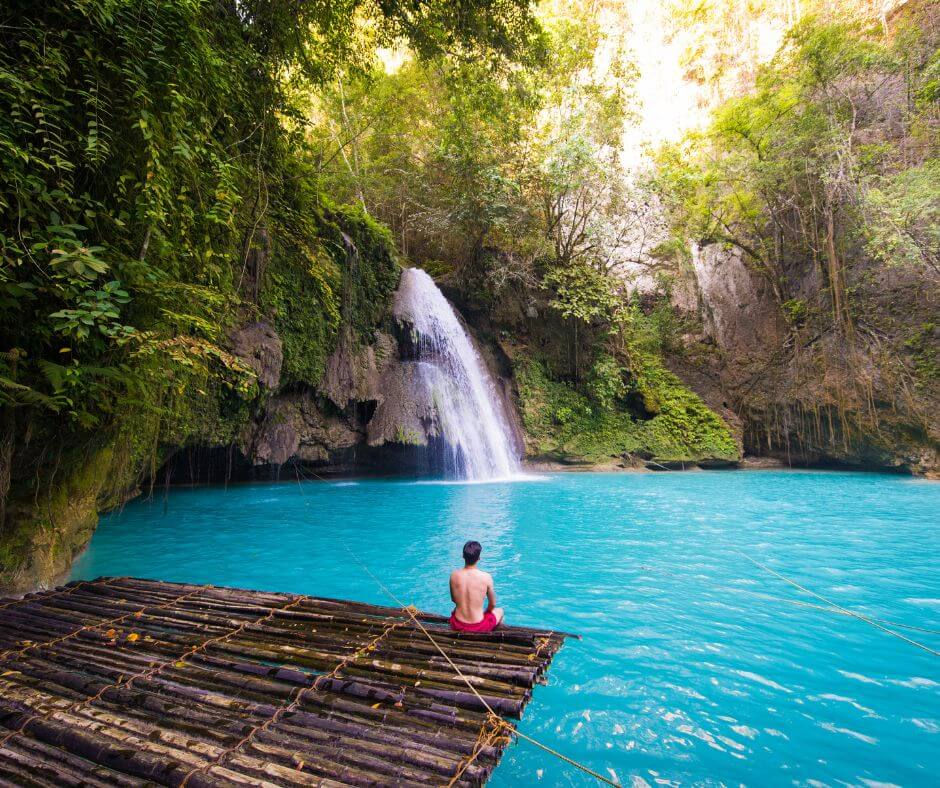
Top Attractions in Cebu Province
From sacred churches and majestic peaks to pristine islands and underwater adventures, Cebu Province offers a dynamic blend of culture, nature, and thrill. Here are some of its most iconic attractions:
Basilica Minore del Santo Niño & Magellan’s Cross (Cebu City)
Located in the heart of Cebu City, the Basilica is the country’s oldest Roman Catholic church, housing the revered image of the Santo Niño de Cebu—given by Magellan in 1521. Just outside stands Magellan’s Cross, marking the baptism of Cebu’s first Christians. These sites form the spiritual and historical core of Cebuano identity and are pilgrimage destinations during the Sinulog Festival.
Kawasan Falls (Badian)
A tropical dream come to life, Kawasan Falls is a three-tiered cascade of turquoise water nestled in the jungles of Badian. Beyond sightseeing, it's one of the Philippines’ top spots for canyoneering—a thrilling trek involving rappelling, cliff jumping, and swimming through river gorges. The cool waters and surrounding bamboo huts make it a favorite for nature lovers and adrenaline junkies.
Osmeña Peak (Dalaguete)
As the highest point in Cebu at over 1,000 meters above sea level, Osmeña Peak offers sweeping views of jagged hills and coastlines, often compared to the Chocolate Hills of Bohol. Ideal for sunrise treks, it’s a relatively easy climb, making it perfect for casual hikers wanting big rewards with minimal effort.
Oslob Whale Shark Watching
The town of Oslob, in southern Cebu, has become world-famous for its unique opportunity to snorkel or dive with whale sharks. These gentle giants swim close to shore in the early morning. While it’s a once-in-a-lifetime experience, travelers are also encouraged to choose responsible tour operators who follow ethical marine tourism practices.
Bantayan Island
Situated off Cebu’s northwestern tip, Bantayan Island is known for its powdery white beaches, turquoise waters, and serene village life. It’s a haven for relaxation, especially at Sugar Beach and Paradise Beach, and a place where time seems to slow down. The island also boasts colonial churches, mangrove sanctuaries, and some of the freshest seafood in the province.
Malapascua Island
A diver’s dream, Malapascua Island is globally renowned for being one of the few places where you can regularly see thresher sharks in the wild. With its coral gardens, wreck dives, and vibrant marine biodiversity, it draws both beginner and professional divers alike. Above the water, expect quiet beaches and cozy resorts.
Camotes Islands
Often referred to as “The Lost Horizon of the South,” the Camotes Islands offer a rustic charm with their unspoiled nature. Highlights include Lake Danao, Bukilat Cave, and endless stretches of peaceful coastline. Perfect for slow travel, this is where you disconnect from the modern world and embrace a simpler island lifestyle.
Cebu Province is more than a single destination—it’s a collection of rich experiences, each corner offering a new adventure, spiritual insight, or tranquil escape. Whether you’re into history, diving, hiking, or just unwinding on the beach, Cebu has a place for every kind of traveler.
Hidden Gems of Cebu
Beyond the well-known spots, Cebu holds quiet corners and lesser-explored landscapes that reward travelers seeking solitude and authenticity. These hidden gems reveal a side of the province that’s raw, peaceful, and profoundly connected to nature and local life.
Carnaza Island
Tucked away in the northernmost waters of Cebu, Carnaza Island is a rugged paradise with crescent-shaped coves, dramatic cliffs, and vibrant marine life. With only basic amenities, it’s ideal for campers, snorkelers, and nature-lovers looking to escape the crowds and experience rustic island living.
Aloguinsan Bojo River Cruise
This award-winning eco-cultural tour in Aloguinsan showcases the province’s mangrove ecosystems. Local guides explain the river’s biodiversity while leading a tranquil paddle through winding waterways. Visitors can also enjoy traditional food and engage in community-led activities, making it a model of sustainable tourism.
Mt. Kan-Irag (Sirao Peak)
Often overshadowed by Osmeña Peak, Mt. Kan-Irag is just a short drive from Cebu City yet offers an exhilarating day hike with breathtaking views. Early morning trekkers are often rewarded with a sea of clouds and golden sunrises over a carpet of hills and forests.
San Remigio
North of Bantayan, San Remigio boasts some of Cebu’s longest coastlines with uncrowded white-sand beaches. It’s a peaceful alternative for beach lovers who want fewer tourists and more local charm. Great for beach walks, sunsets, and slow days.
Badian Highlands
Overlooking the southwestern coast, the Badian Highlands offer panoramic viewpoints, sunrise spots, and cool mountain air. This upland community is perfect for treks, scenic picnics, and a fresh perspective on the coastal landscapes below.
These off-the-beaten-path locations reveal Cebu’s quiet soul—untamed, untouched, and undeniably beautiful.
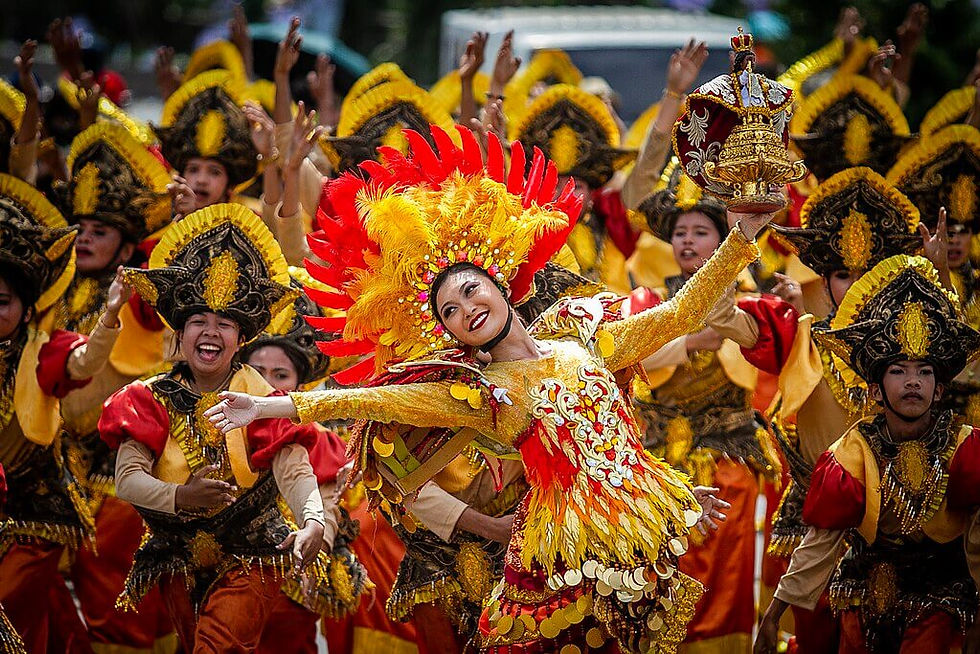
Culture and Festivals of Cebu
Cebu’s cultural tapestry is a vibrant blend of indigenous roots and centuries of Spanish influence, resulting in a unique heritage that’s deeply spiritual, artistically rich, and proudly Cebuano.
Sinulog Festival
Held every third Sunday of January, the Sinulog Festival is Cebu’s most iconic celebration, honoring the Santo Niño (Child Jesus)—a relic brought by Ferdinand Magellan in 1521. The city erupts in a kaleidoscope of color, sound, and movement as performers in elaborate costumes dance to rhythmic drumbeats in a grand procession. It’s both a religious pilgrimage and a cultural spectacle, drawing millions of devotees and tourists each year.
Catholic Devotion & Ancestral Customs
Cebu remains a stronghold of Catholic faith, but beneath this spiritual layer lie ancient practices and stories. Rural communities still uphold ancestral customs, folk healing, and rituals that pre-date colonization, often blending them seamlessly with Catholic observance.
Cebuano Language and Identity
Cebuanos take pride in their language, which is widely spoken across the Visayas and Mindanao. Beyond a means of communication, the Cebuano dialect is a vessel of humor, poetry, and oral tradition, keeping local identity alive in everyday life.
Handicrafts and Artisanal Traditions
Cebu is renowned for its guitar-making, especially in Lapu-Lapu City, where workshops produce hand-crafted instruments sought worldwide. Weaving in Argao and basketry, as well as shell crafts and delicately embroidered garments, reflect generations of artistry passed down through families.
Cebu’s culture is not just preserved—it’s lived. Whether in grand parades or quiet daily rituals, the province pulses with a deep sense of tradition, pride, and creativity.
Food and Dining in Cebu
Cebu’s culinary scene is a flavorful journey through heritage, coastal bounty, and street food culture. Whether you’re in the heart of Cebu City or exploring island towns, food is an essential part of the experience.
Must-Try Dishes
Lechon Cebu – Famously crispy and seasoned with herbs, hailed by many as the best roasted pig in the Philippines.
Puso – Rice wrapped in woven coconut leaves, also known as “hanging rice,” often paired with grilled meats.
Sutukil – A coastal classic combining three seafood preparations: sugba (grilled), tula (stewed), and kilaw (raw/cured).
Ngohiong – Cebu-style spring rolls with Chinese-inspired spiced fillings.
Cebu Mangoes – Renowned for their sweetness and exported globally.
Where to Eat
In Cebu City, try Rico’s Lechon, CNT Lechon, or House of Lechon for your pork fix. Larsian BBQ near Fuente Circle is a go-to for grilled skewers and late-night eats. For seafood, STK ta Bay! combines homestyle cooking with local ambiance. Coastal towns like Moalboal, Daanbantayan, and Argao are known for seafood grills, where the day’s catch is cooked to order.
Local Eats
Carbon Market – A bustling public market with dried fish, local snacks, and street eats.
Taboan Public Market – Popular for danggit (dried fish) and Cebuano delicacies.
Street Food Stalls – Found near schools and transport hubs, offering isaw, fishballs, tempura, and more.
Cebu’s food culture is best enjoyed like the locals do—casual, communal, and full of bold flavors.
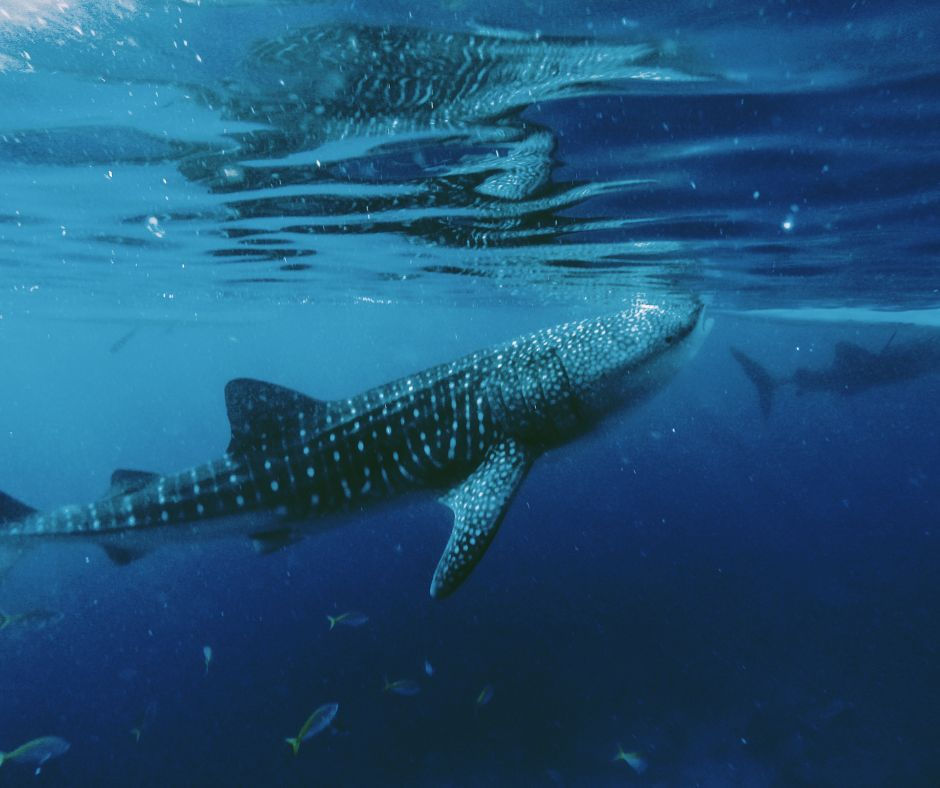
Where to Stay in Cebu
From city skyscrapers to island hideaways, Cebu offers a diverse range of accommodations for every kind of traveler.
Cebu City – Hotels and Urban Comforts
Stay close to shopping, nightlife, and history. Choose from budget hostels to luxury stays like Radisson Blu, Quest Hotel, and Seda Ayala Center for convenience and comfort in the metro.
Moalboal and Oslob – Beach and Dive Resorts
Ideal for snorkelers and divers, these towns offer affordable beach resorts and dive lodges. Enjoy relaxed seaside vibes and easy access to marine sanctuaries and whale shark tours.
Malapascua and Bantayan – Island Retreats
Head north for white-sand beaches and quiet island life. Options include beachfront cottages, backpacker hostels, and boutique resorts with views of turquoise waters.
Camotes Islands and North Cebu – Hidden Getaways
Family-owned guesthouses and eco-stays dominate here. Perfect for those looking to unplug and experience rural island life.
Mountain Areas – Glamping and Rustic Escapes
Busay and Balamban offer cool mountain air, scenic views, and unique stays—like hilltop cabins and glamping tents—just a short drive from the city.
Whether you're chasing comfort, nature, or culture, Cebu has a place to rest your head.
Getting There and Around
By Air
Cebu is easily accessible via Mactan-Cebu International Airport (MCIA), the second busiest airport in the Philippines. It services daily domestic flights from major cities like Manila, Davao, and Iloilo, along with international routes from Singapore, Seoul, Tokyo, Dubai, and more. The airport is located in Lapu-Lapu City, about 45 minutes from Cebu City proper.
By Sea
Cebu is a key ferry hub in the Visayas, with regular routes connecting it to Bohol, Leyte, Negros, Mindanao, and Luzon. Fast crafts and overnight ferries arrive at Cebu City’s piers, making sea travel a viable and scenic option.
Local Transport Options
Getting around Cebu is a mix of modern and traditional. In urban areas, Grab (ride-hailing app), taxis, and V-Hire vans are convenient. For short distances and a local experience, hop on jeepneys or habal-habal (motorbike taxis), especially in rural or upland areas.
Island Hopping and Coastal Travel
Smaller boats and inter-island ferries serve destinations like Malapascua, Bantayan, and Camotes. Be ready to transfer via port towns or local docks, and always check ferry schedules in advance, especially during off-peak season or bad weather.

Osmeña Peak
Best Time to Visit
Cebu enjoys a tropical climate, making it a year-round destination, but timing your trip can greatly enhance your experience.
Dry Season (December to May)
The best time to explore Cebu’s beaches, waterfalls, dive sites, and mountain trails. With clear skies and calm seas, this period is ideal for island-hopping, whale shark watching, and snorkeling adventures. It’s also a great time to enjoy the coastal sunsets and outdoor activities without the risk of sudden downpours.
Sinulog Festival (3rd Sunday of January)
Draws thousands to Cebu City in a massive celebration of dance, devotion, and color. If you love festivals and cultural immersion, this is the highlight of Cebu’s event calendar—just be sure to book accommodations early.
Off-Peak Travel (June to November)
Falls during the rainy season, but it has its perks. There are fewer tourists, lower prices, and greener landscapes. While occasional typhoons or rain showers may occur, flexible travelers can still enjoy Cebu with fewer crowds and a more relaxed vibe.
Whether you're chasing the sun or looking for solitude, Cebu has something magical in every season.
Essential Travel Tips
Exploring Cebu’s cities, islands, and highlands offers unforgettable experiences—especially when you’re well-prepared. Here are key tips to make the most of your journey:
Bring Cash for Island Towns
While Cebu City has plenty of ATMs and card-accepting establishments, smaller towns like Malapascua, Bantayan, and Camotes often operate on cash only. Bring enough cash before you head out to avoid long trips just to find an ATM.
Book Ahead During Peak Season
Cebu is a popular destination, especially around Sinulog Festival (January), Holy Week, and summer months (March–May). Book ferries, accommodations, and island-hopping tours in advance to secure spots and avoid last-minute stress.
Respect the Marine Environment
Cebu’s marine ecosystems are fragile. When snorkeling or diving, avoid stepping on or touching coral. Feeding whale sharks in Oslob is discouraged—opt for ethical wildlife viewing practices where the animals’ natural behavior is not disrupted.
Travel Sustainably
Use reef-safe sunscreen to help protect coral reefs and bring a reusable water bottle to minimize plastic waste. Many coastal and mountain areas now promote eco-tourism—support these by choosing local guides and staying in eco-lodges.
Learn Basic Cebuano
Simple greetings like “Maayong buntag” (Good morning) and “Salamat” (Thank you) go a long way in connecting with locals and showing respect for Cebuano culture.
With thoughtful planning and cultural sensitivity, your trip to Cebu will be more enriching—for both you and the communities you visit.
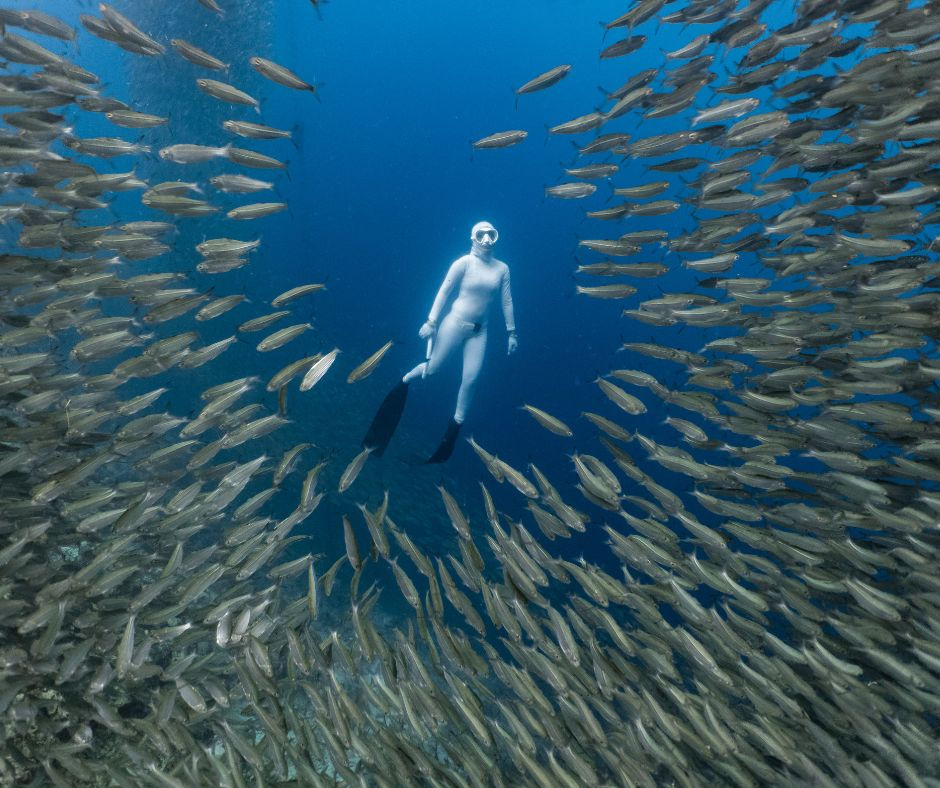
Frequently Asked Questions (FAQ)
Q: Is Cebu safe for tourists?
A: Yes, Cebu is generally safe for travelers. Like any urban or rural area, exercise basic caution—especially in crowded places like markets or terminals. Locals are known for their hospitality, and tourist-friendly services are widespread.
Q: How many days should I spend in Cebu?
A: A 5 to 7-day trip allows you to explore Cebu City’s historical sites, take island-hopping tours, and visit diving and beach destinations like Moalboal, Malapascua, or Oslob. For a more relaxed pace with side trips to Bantayan or Camotes Islands, consider extending to 10 days.
Q: Can I do island-hop tours from the city?
A: Yes. While Cebu City isn’t directly known for island-hopping, nearby Mactan Island is a hub for such tours—offering day trips to Hilutungan, Nalusuan, and Caohagan Islands.
Q: Do I need a tour guide for canyoneering?
A: Absolutely. Canyoneering in Badian (Kawasan Falls) requires a licensed guide for safety and regulation compliance. They provide gear, briefings, and ensure environmental protocols are followed.
Q: Are whale shark encounters ethical?
A: The whale shark experience in Oslob is controversial due to artificial feeding. While it offers close encounters, many marine advocates recommend more natural settings like Donsol. If you go, choose responsible operators and observe ethical guidelines.
Q: Where can I buy local crafts or souvenirs?
A: Check out Carbon Market in Cebu City, Taboan Market for dried fish, and local shops in Liloan and Carcar for handwoven crafts, delicacies, and artisanal products.
Takeaway
Cebu is more than just a stop on the Philippine travel map—it’s a destination where history, culture, and adventure converge. As the “Queen City of the South,” it offers a remarkable journey that spans centuries and ecosystems: from the revered Magellan’s Cross and the vibrant Sinulog Festival to the thresher shark dives of Malapascua and the tranquil shores of Bantayan Island.
Whether you’re a first-time traveler exploring the country, a history buff tracing the roots of Christianity in Asia, an island hopper chasing sunsets, or a foodie searching for the best lechon and street fare—Cebu welcomes you with its warm smiles and diverse offerings.
Beyond the capital’s malls and historic landmarks lie untouched beaches, eco-tours, and mountain retreats just waiting to be discovered. It’s a province that invites you to pause in the city, breathe by the sea, and wander through the hills—all in one trip.
Cebu doesn’t just offer a vacation; it offers a deeper connection to the Philippines. Take your time, explore its many faces, and let Cebu surprise you every step of the way.
















My hometown cebu 🫶🫶
Queen City of the South, Cebu is a vibrant fusion of the old and new—where centuries-old churches and historic landmarks stand just a short drive from dazzling beach resorts and dive havens.
Cebu Province is more than just Cebu City. Beyond the bustling capital lies a string of idyllic island towns, pristine white-sand beaches, turquoise waterfalls, and rugged mountain escapes. Whether you're diving with thresher sharks in Malapascua, island-hopping through Bantayan and Camotes, or savoring world-famous Lechon in Carcar, Cebu offers a travel experience that’s as diverse as it is unforgettable.
Highly Recommended destination 😍
Cebu💕